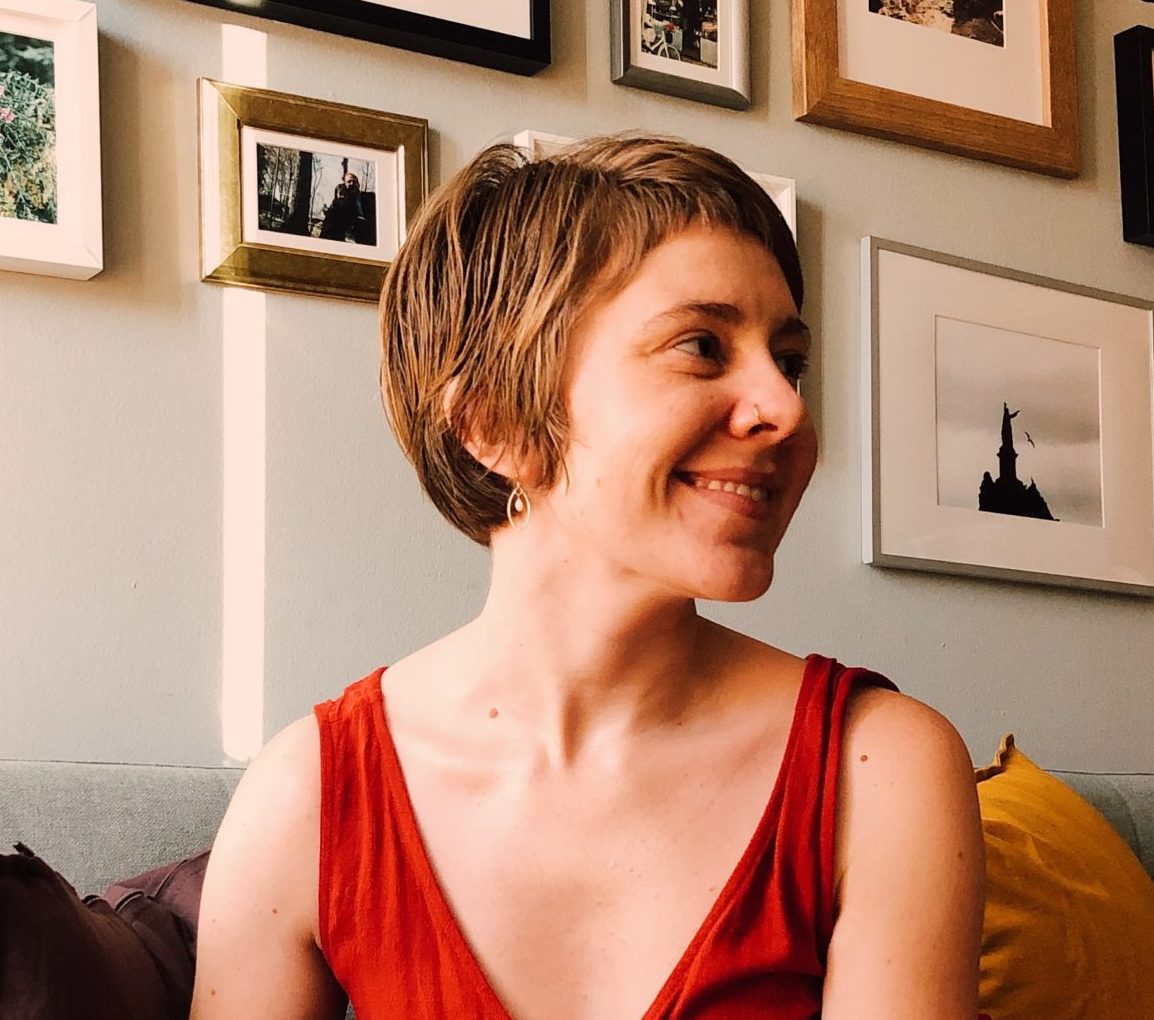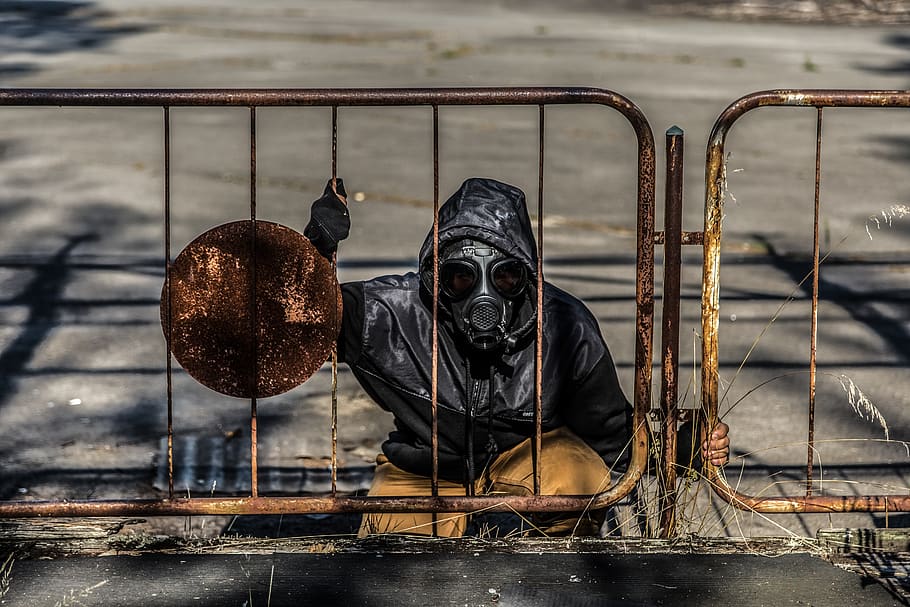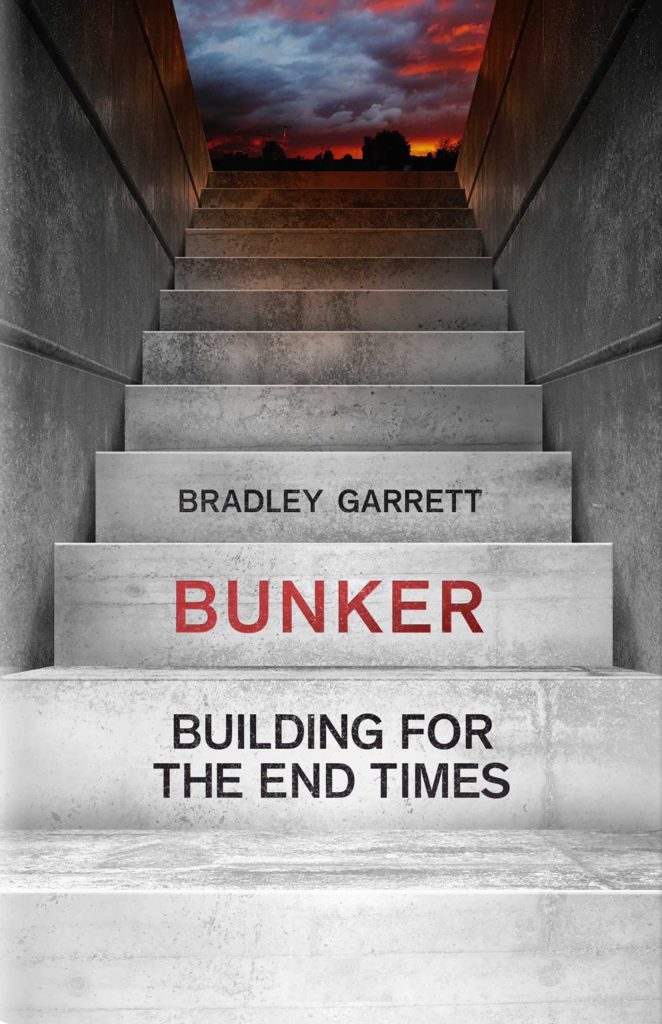Publisher Simon and Schuster would like you to believe that Bunker: Building for the End Times is a study in the most extreme forms of prepping. The book’s jacket promises it will be “chilling” and “eerily prescient.” The cover itself pictures a set of concrete steps that open on a possibly-post-apocalyptic world. When Simon and Schuster sent us an early copy of the book, which goes on sale on August 4, for review, this was the first thing I noticed. It looked like the end times were already here.
Indeed, in the early pages, as Robert Vicino (of xPoint in South Dakota) inside a Starbucks talks about “the point from which humanity will arise after the great calamity,” it does appear to be about preppers who find themselves on the bunkered down, armored-vehicled, doomsday-fantasied side of things.
But by page 110, the book’s author, Dr. Bradley Garrett, is engaging in what he calls “practical, low-level prepping” in Australia. He imports a Jeep Wrangler from the United States. He starts practicing bug-outs with his girlfriend.
It’s a story that’s familiar to many of us — from happy-go-lucky modern life to a realization that the way we live might not be sustainable, to sane, low-level prepping. When the coronavirus hit, Garrett bugged out for real. “I left,” Garrett said when I called him last week, expecting to find him in LA. “I bought a cabin in the woods and I don’t know if I’m going back — ever.”
Now, just before his book hits shelves for the first time, Garrett has emerged as a fellow advocate for sane prepping. He has a vision for the future of emergency preparedness — community-oriented, rational, hopeful, joyful prepping. And he hopes the COVID-19 pandemic will bring that vision to life.
As I sat down to write this review of Bunker, I struggled to reconcile the fun parts of the book’s doomsday fantasy tourism with the problems I see with that representation of prepping. And then there was Garrett himself, who I interviewed over the phone, and who made me feel wildly hopeful for the future of emergency preparedness and our community. In the end, the book felt like a remnant of the pre-coronavirus time, while Garrett himself seemed firmly rooted in the present.
“How we present prepping to the rest of the world is really crucial,” Garrett said. “It’s a critical moment for us to say ‘Prepping is normal. The way we’ve been living is abnormal.’” Here’s what you need to know about Bunker — Garrett’s presentation of prepping to the world:
- Bunker is a good book. It introduced me, a new prepper, to a lot of theory and history I was missing. To me, it’s an important ethnography of prepping that could help newbies get a sense of the history.
- Parts of the book read like a joke about preppers. And it seems to me that Garrett’s new view of prepping doesn’t line up with how he portrays preppers in the book.
- Overall, it’s a fun read and I recommend it, but it’s also worth noting that Bunker is an artifact of the Before Pandemic, even though Garrett and his editors have tried to weave COVID throughout.
A tour of the pre-apocalypse
One of Bunker’s strengths is the amount of travel, immersion, and analysis that went into it. The book spans four continents: North America, Australia, Europe, and Asia, and it reads like a Who’s Who of the prepping universe. As I read, I found myself Googling locations and watching videos. To me, that’s a marker of success.
I sometimes find that stopping to Google takes me out of a book. Before I know it, I’m scrolling through Twitter. But while I was reading Bunker, I didn’t get distracted. Or at least my distractions were more on theme. I caught myself scrolling through the Rising S Bunkers website, for example, where I heard myself call my boyfriend over: “Just look at this 6,000 square foot bunker!”
Often, I googled just to confirm I was reading nonfiction.
My Googling took me on a tour of the sites Garrett himself visited. From my COVID lockdown apartment in Minneapolis, I traveled digitally to Chiang Mai, Thailand, where I wanted to see if the luxury eco-villas at Sanctum were ever finished. (Google Maps shows both fancy renderings like the one below along with real images.)
I also did some online tours of the Survival Condo in Kansas, where a full floor of a military silo could cost you $3 million. Looking out your “window” screens, you could see a live feed of Kansas or prerecorded footage from the home you’ve left. You could also go to the pool or “shop” in the grocery store for food you’ve already paid for.
Then there was xPoint—less luxurious than Survival Condo and Sanctum but also (possibly) more alive. According to Garrett, people actually live in these military bunkers in South Dakota. They’ve fixed them up on their own, so each one has different amenities and styles.
My digital tourism went well with Garrett’s prose. While I already trusted that what he wrote was true, seeing it for myself on the internet confirmed that this kind of prepping was really happening. I had to look for extra confirmation because these extreme, fortified bunkers felt so far from the prepping I’ve come to know at The Prepared.
With rational prepping as my introduction to the world of preparedness, I had no idea some people thought it was necessary to move into a literal bunker. (The Prepared’s home hardening guide recommends reasonable things like locks, enhanced strike plates, and motion-activated lights for a total of $195 – a far cry from a $3 million underground bunker with an indoor swimming pool.)
In the bunker or out?
I’ll be curious to find out how non-preppers feel about Bunker when it goes on sale next week. Will they glom on to prepper Robert Vicino’s extreme language, the failure of Trident Lakes in central Texas, and the image of Big Red, the “two-hundred-fifty-square-foot six-wheel-drive” mobile bunker with three king-sized beds inside? Or will they be able to read past the shock value and understand the hope Garrett has for prepping, and for the future of the world?
Garrett makes his position clear early in the book, all the way up in the introduction:
Often, I came away from my encounters with survivalists, scholars, bunker builders, and the devoutly religious with a sense of latent hope—hope of rebirth from disaster. All prepping is about hope for a better future, even if that hope casts a dark shadow.
Just twenty pages later, Garrett finds himself drunk at xFest, a prepping festival held at xPoint, the bunker in South Dakota. At xFest, the YouTuber Rex Bear and an unnamed woman “swathed in a cape and carrying a small kerosene lantern” argue about Planet X around a fire.
So is this book meant to be voyeuristic doomsday porn or a reasonable exploration into the way most of us prep?
The above examples suggest the former, though my interview with Garrett felt like the latter.
Look, I have nothing against Bradley Garrett. It makes sense that his book contains both doomsday fantasies and more rational prepping. He’s an ethnographer, after all, and his goal in writing this book was ostensibly, as the jacket reads, to “meet those who are constructing panic rooms, building underground backyard survival chambers, stockpiling supplies, preparing go-bags, hiding inflatable rafts, rigging mobile ‘bug-out’ vehicles, and burrowing deep into the earth.”
It’s easy to imagine that had COVID-19 not struck while Garrett was finishing up Bunker, this book could have been a tour through the most extreme cases of prepping and doomsday fantasy on four continents. It might have been beloved by non-preppers — look how wacky these people are!
But then the pandemic came, and preppers were ready. Garrett’s dabbling in prepping changed his life. And now the book has to straddle a weird line: between voyeurism and activism. All that as the world makes its way through a pandemic, preppers help guide the way, and the book’s author is bugged out in a cabin.
When the pandemic began, Garrett could have joined his friends in a bunker at xPoint. “They made it very clear to me that if disaster were to strike and I showed up a bunker would be available to me,” he said on the phone last week.
Of the people Garrett interviewed for the book, he estimates about 100 had actual, physical bunkers. Half of them went to their bunkers when they realized the pandemic was sticking around. “A lot of them told me it did give them a sense of peace,” he said.
From Los Angeles at the start of the pandemic, Garrett thought about what would happen if he locked himself up in South Dakota in a bunker like his friends: there’s a bunker, we close the blast door, and we’re safe while the pandemic rolls through the country. But “I just kept thinking about our family members that we’d have left here.”
Garrett didn’t take his xPoint friends up on their offer. Instead, he stayed in LA until he couldn’t take it anymore. Then he bugged out—with his family.
“The bunker as the bug-out location, that model seemed to make less and less sense to me as time went on,” Garrett said. “Blooming where you’re planted, staying close to family, building as and where you can but maintaining those family relations is what’s important.”
What does that kind of prepping look like?
(Ahem, Emergency preparedness checklist: Prepping for beginners)
To start, making Garrett’s vision of prepping a reality might involve changing what the American public imagines when they think about “prepping.”
“We’ve mythologized prepping and we associate it with hoarding, but it’s actually the opposite,” Garrett said. “Thinking about the future as being peppered with crises is completely rational because that’s what history has showed us. We do skate from one crisis to another.”
Now that we’re in the middle of a global crisis, we can’t ignore that pattern. We have to look at it head-on. ”If you have cancer, you want to know you have cancer so you can treat it. We’ve been living in an incredibly naive bubble for a long time. The pandemic is a rupture.”
It’s a rupture that’s made many people share their prepping with others. “I have multiple friends and family members who knew I was writing this book for three years. When the pandemic hit, I realized they had stockpiles,” Garrett told me. His friends and family hadn’t told him they were prepping because they were ashamed. (And maybe they were worried they’d be written up like the Planet X people at xFest.)
COVID’s silver lining: it’s normal to prep now
Garrett thinks the pandemic has ended that shame. More mainstream preppers are “coming into the fold and what they’re bringing with them is a different set of ideologies. And that’s really important.”
“A lot of prepping has been dominated by that lone-wolf mentality and then we kind of morphed into this right-wing extremist kind of militant, hyper-conservative, and anti-government combination… What we’re seeing now is people coming into prepping who have a different set of beliefs and feelings about what should be built.”
More: Why you should be more open about your prepping and recruit others
As prepping grows into common consciousness, the community grows with it. It can contain more people, and they can focus on building the communities they want to see in the future.
“I think the isolationist model is the old model,” Garrett said. “I know there are still people doing that, but the people I talked to are interested in building community resiliency.”
Prepping is incredibly joyous
But how can we pitch prepping to those who seem reluctant?
“If we’re talking about practices — learning how to build a shelter, pick a lock, grow food — these are basic components of being a human,” he said. “I always pitch it as a kind of recovery and recuperation of lost skills.”
Preparing with skills won’t insulate you from every crisis. We can’t know what the future holds. But having survival skills and knowing you can grow food for your family if you need to can give you some peace.
Now that prepping is in the mainstream, more people can have that peace.
“We took my girlfriend’s niece on her first backpacking trip,” Garrett said. “We had her start a fire with a ferro rod. She was just stoked! To be outside, surviving on her own, doing things with her hands. Doing things like that, it just gives people a lot of peace. That’s something everyone can make a lot of time for.”
That’s the experience of prepping Garrett wants us to focus on. It’s fun to play with supplies and make theories about the future, but prepping is really about community and care. “It’s incredibly joyous,” Garrett said. “It’s a way to get out into nature. It’s a bonding experience!”
And, ultimately, prepping is a hopeful practice. “If we didn’t believe there was going to be a future, we wouldn’t prep. We have to always be thinking about how things can be better.”
Dr. Bradley Garrett’s new book, Bunker: Building for the End Times will go on sale on August 4, 2020. It’s available now for preorder.



You are reporting the comment """ by on